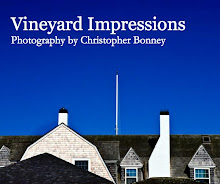
The Fisherman, 1964
We had dinner last night with a friend who’s getting ready to start a class on how to use sewing software. Yes, even one of the oldest home crafts is now digitized. This friend is one of those kind people who always has a thoughtful, personally made gift for newborns, newlyweds and other important occasions. Starting next week she’s going to learn how to design elaborate embroidery designs on the computer screen and have the computer tell the sewing machine how to move a mobile platform around under the needle so that the design can be applied to fabric stretched over it.
In the sewing world, I suppose this is akin to how we felt in the newspaper industry in the 1970s when electronic pagination came along. We learned how to use Atex digital newspaper composing systems that could send complete pages to engraving department, which had not too long before changed from cumbersome hot type to nimble and cheap plastic printing plates. Today you can probably produce a newspaper on a Mac. (Or jump straight over that “old” technology and go straight to Flipboard.
Ever since the first battery went into a camera, I suspect photography purists have been casting knowing looks at each other about the lazy newbies who rely on automatic cameras. My first serious cameras, bought during the mid-1960s, were completely mechanical and required that you either have a very refined sense of exposure or else always carry a light meter with you. (I still have the little gray Gossen light meter I used back then. If you’re of a certain age, you know exactly which one I’m talking about.)
My first semi-automatic camera was a Nikon purchased in 1968. What made it any bit automatic was that it had battery-powered through-the-lens metering. All you had to do was match up aperture and shutter speed settings until a little arrow in the viewfinder lined up.
I didn’t buy another camera until 1995. It was another Nikon and it was, compared to the old one, fully automatic. If you wanted to, you could let the internal meter calculate the right exposure or focus your lens. I still liked to meter manually so that I could have greater control over depth of field. But since my eyesight has started to decline, I’ll admit I appreciated the more precise auto focusing.
Even in those pre-digital days you could hear the photography purists tut-tutting about all the aspiring photographers who would never be “serious” photographers because they didn’t know the craft of picture making.
Let’s just say I spent enough years in darkrooms processing film and making wet prints to appreciate the craft of photography. I was also only too happy to leave all those stinky chemicals, wet paper and red-tinted rooms behind when digital photography came along.
These days anyone with $100 can have a decent digital camera with decent optics. What used to be done in the darkroom can now be done on the computer monitor. (We’ve traded stinky fingers for strained eyes.) I’ve nothing against those who continue to practice the old craft of film and wet processing. But insisting that photography isn’t authentic if you don’t do it the old way is like insisting that we should still be driving crank-start jalopies that don’t have windows or weather-tight roofs.
Which is why I was interested when a painter friend told me about the Introduction to Digital Photography class she was taking. Just recently she was telling me about how she had advised yet another artist friend who has taken up digital photography that the friend ought to stop using the automatic metering in her camera and instead learn how to set her exposures manually.
This got me to wondering whether the first friend’s instructor is one of those old purists who’s having a hard time making the transition from old craft to new technology. I understand why it’s important to know and be able to employ various aperture and shutter speed settings. But in the end it’s all about the impression created by the image itself. And if you’re just taking a picture of something, why not let the camera do some of the work for you so that you can concentrate on the subject and composition?
At first I thought it was a little silly that my sewing friend is going to turn the work of actually embroidering designs on fabric over to her computer and sewing machine. Where’s the craft, I thought? But then I realized that I was sounding like one of those old photography purists who insists that every step in the process of making a photograph should be done manually. My friend will still pick the patterns—maybe even design some of her own—and decide which colors and threads to use. So I shut up.
I chose to show you Fisherman, above, because it was taken in 1964 with a Kodak Instamatic camera. I knew almost nothing about aperture and shutter speed then and the Instamatic gave me no choices anyway. This photo earned me an honorable mention in a national contest, which just goes to show you that either standards were lower in those days or that it really is the impression the photo makes that’s important, not what you used to make it.


































